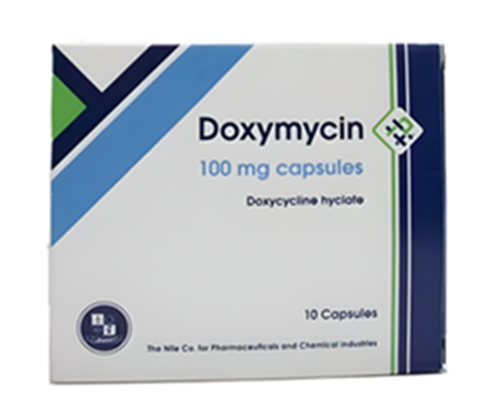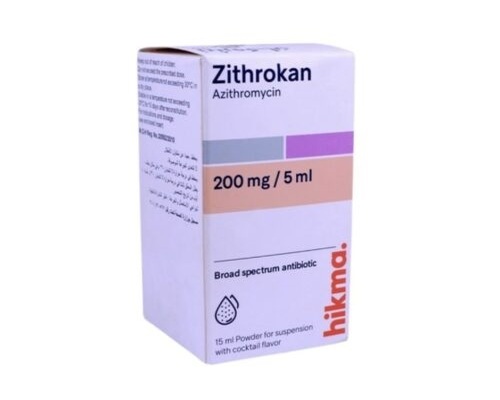Description
Trade name:
Doxymycin
Composition:
Each capsule contains:
Doxycycline 100 mg
Excipients:
calcium stearate, lactose monohydrate, potato starch.
Properties:
Semi-synthetic tetracycline, a broad-spectrum bacteriostatic antibiotic. Penetrating into the cell, it acts on intracellular pathogens. Suppresses protein synthesis in the microbial cell, disrupts the connection of transport aminoacyl-RNA with the 30S subunit of the ribosomal membrane.
To a lesser extent than other tetracycline antibiotics, it inhibits intestinal flora, differs from them in more complete absorption and a longer duration of action. In terms of antibacterial activity, doxycycline is superior to natural tetracyclines. Unlike tetracycline and oxytetracycline, it has a higher therapeutic efficacy, manifested in treatment with 10 times smaller doses, and a longer action. There is cross-resistance to other tetracyclines, as well as to penicillins.
Indications:
Infectious diseases caused by pathogens sensitive to doxycycline.
Method of administration and dosage:
Take orally during or after meals.
It can be taken simultaneously with food, including milk or carbonated drinks.
The usual dose of doxycycline in adults is 200 mg on the first day of treatment (single dose or 100 mg every 12 hours), and then the drug is prescribed at a maintenance dose of 100 mg / day (single dose or 50 mg every 12 hours). For more severe infections (especially chronic urinary tract infections), the drug should be used at a dose of 200 mg / day throughout the course of treatment.
Contraindications:
-hypersensitivity to doxycycline, components of the drug, other tetracyclines;
-lactase deficiency;
– lactose intolerance;
– glucose-galactose malabsorption;
– porphyria;
– severe liver failure;
– leukopenia;
– childhood (up to 12 years – the possibility of formation of insoluble complexes with calcium ions (Ca2+) with deposition in the skeletal system, enamel and dentin of teeth);
– children over 12 years of age weighing up to 45 kg.
Precautions:
To prevent local irritant effects (esophagitis, gastritis, ulceration of the gastrointestinal mucosa), it is recommended to take the drug during the daytime with plenty of liquid and food. Due to the possible development of photosensitivity, it is necessary to limit insolation during treatment and for 4-5 days after it.
Side effects:
From the digestive system: nausea, constipation or diarrhea, abdominal pain, glossitis, dysphagia, esophagitis (including erosive), gastritis, ulceration of the stomach and duodenum, pseudomembranous colitis, enterocolitis (due to the proliferation of resistant strains of staphylococci).
Allergic reactions: maculopapular rash, skin itching, skin hyperemia, angioedema, anaphylactoid reactions, drug-induced lupus erythematosus, erythematous rash, exfoliative dermatitis, urticaria, anaphylaxis, anaphylactic shock, anaphylactoid reactions, Stevens-Johnson syndrome.
From the cardiovascular system: pericarditis, decreased blood pressure, tachycardia, erythema multiforme.
From the hematopoietic system: hemolytic anemia, thrombocytopenia, neutropenia, leukopenia, eosinophilia, decreased prothrombin index.
From the hepatobiliary system: liver dysfunction, increased liver transaminases, autoimmune hepatitis, cholestasis.
Musculoskeletal system: arthralgia, myalgia.
Storage method:
At a temperature not exceeding 25 degrees. In a dry place.
Packaging:
A cardboard box contains a blister of 10 capsules, paper instructions.









